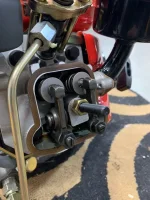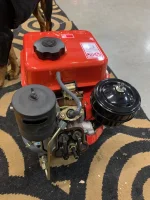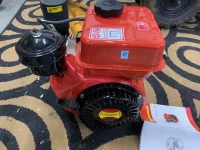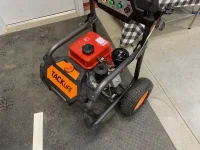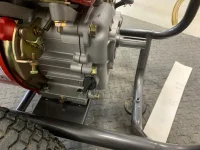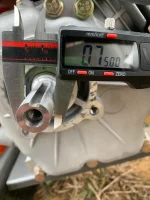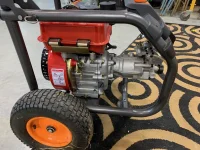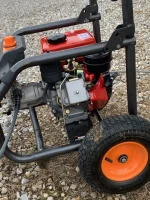I would guess these technically aren't legal to even import. I am not an expert but the EPA has laws for small engines now. My guess is these are coming in under the radar. 20mm is a common shaft size globally. Only USA and a couple other countries use inch units anymore. If the demand got large enough then sure - they could build you some with a 19.05mm (0.750 inches).
You're right, small engines do need to meet EPA regulations and I'm fairly certain these would never pass that test. No emissions label on the unit like you'd normally find. Not sure how they get imported and skate by the regulations, perhaps because they're not sold as complete functioning equipment. Just guessing.
What does the shaft on the diesel engine measure?
The shaft is 20mm. Normal equipment here is 3/4, 7/8 (not common) and 1".
I got it fired up no problem. I did a rudimentary fuel system bleed by cracking the injector line and pulling the starter rope with the compression release engaged several times. Word of warning: don't do the initial start in an enclosed space/garage. Smokes like a freight train on initial start. I didn't intend to start it (was a test pull of sorts), but it fired up on the very first pull filling my shop up with smoke.
The startup sequence goes like this: pull rope until you feel resistance / compression stroke. Engage compression release. Then pull like you MEAN it, you have to overcome that first compression stroke after the release disengages. It starts up easily every time.
It's louder than a gas engine, but very tolerable. Runs smooth at normal RPM (3K or so), but gets very shaky when you lower it down near idle speed. No black smoke after that initial start except when you're ramping up the RPM quickly.
Engine runs very cool compared to a gas engine. After running it 5-10 minutes, I could still touch the crankcase and heat fins comfortably after shutdown. I used Rotella T1 straight 30 weight for the initial oil fill. Will probably change out to Rural King's 10w30 all-fleet oil after a few hours.
Right now I'm in the process of milling the shaft down to 3/4 using sandpaper while it's running. Might take a while but it's getting there.

